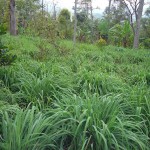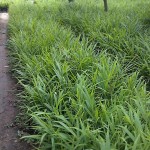Currency Influence
How is a local tax amnesty in Indonesia impacting on your essential oil prices? Well it’s quiet simple. By attracting local business and residents to return monies invested overseas at a reduced tax rate, the Indonesian government is hopeful that the increased tax revenues will stimulate further growth in the economy, which in turn will strengthen the local currency, the Indonesian Rupiah (IDR). This strength means that when converted into US Dollars it takes more dollars to buy the products, which results in your prices increasing.
This initiative has been spoken about since the turn of the year and has recently been implemented. It is because of this we’ve seen a sudden strengthening of the IDR, which is likely to continue throughout the course of 2016. Of course currency can be influenced by other global factors and of course by the performance of the US Dollar itself, but based on what we know locally we can expect further strengthening in the months to come.

Courtesy of XE.com. You can see how over the past 9 months the IDR has appreciated by around 13% and is having a direct impact on Indonesian export prices. This trend is set to continue over the coming months largely due to the government’s tax amnesty.
Interested to understand more? Here’s what ‘Indonesian Investments’ had to explain:
Indonesia’s tax revenue realization in the first half of 2016 was disappointing. According to the latest data, Southeast Asia’s largest economy collected a total of IDR 518.4 trillion (approx. USD $39.6 billion) worth of tax revenue (including customs and excise) in the first six months of 2016, down 3.3 percent (y/y) from tax revenue realization in the same period one year earlier, and only 33.7 percent of total targeted tax revenue (IDR 1,539.2 trillion) set in the revised 2016 State Budget. The disappointing performance is mainly due to weak tax income from the oil and gas sector.
For taxpayers and small to medium sized businesses that reveal assets overseas of up to Rp 10 billion will be charged a redemption fee of 0.5%, while those that reveal more than Rp 10 billion will be subject to a 2% charge. Taxpayers willing to repatriate their assets from abroad will be granted a 2% redemption rate for July – September 2016, 3% for the period from October to December 2016 and 5% for January 1, 2017 until March 31, 2017.
Finally, taxpayers who declare their assets abroad without repatriation will cost 4% for the period July-September 2016 6% for the period from October to December 2016 and 10% for the period January-March 2017.
When we put this into some perspective it is estimated that within months of the amnesty Indonesia could see an increase of up to IDR 1,000 trillion (approx. USD $76 billion) in funds according to government estimates.
It is believed that a whopping IDR 11,450 trillion (approx. USD $867 billion) is invested/banked outside the country undeclared, which is nearly the same size as Indonesia’s gross domestic product (GDP).
The difference for normal taxpayers is significant. This new Bill allows individuals to bring money back into the country at 2% tax whereas a normal income tax rate in Indonesia would be as high as 25% (still not so bad some may say!).
La Niña Effect
Last year we wrote about the negative effects of the largest ever recorded El Niño, which brought some severe droughts to the region. Sadly, this year we have the opposite as significantly higher rainfall during the dry-season is causing mass devastation. The dry-season usually lasts from July to early September but Indonesia has been experiencing the exact opposite.
This time last year the news reported the devastating forest and peat land fires which burned an area the same size of Macedonia (an area around 25,000 square kilometres) causing smoke to engulf large areas as far away as Singapore. This year the excessive rains are causing localised floods and landslides already resulting in many deaths.
We know these effects are not new. These are challenges the region has faced throughout its history but they are certainly becoming more extreme and frequent. We now understand the weather in more detail, which is why there is more information on the causes of extreme weather and a greater appreciation of the impact it has in a global commercial world.
Farming in remote land areas during these times cannot only be dangerous, but also will massively slow down raw material collections, potentially inflating prices due to shortages in supply. It is something that one way or another we face year on year and depending on the global market conditions, including the strength of market demand, their impact can go from unnoticeable to destructive.

Here is a typical weather pattern seen during a La Niña season. You can see the ‘Wet’ weather highlighted in green sat on Indonesia for a period that can last months at a time when it is typically dry
Click the PRINT button at the top left of the page to download a copy of this report which is a preview of our full market report due to launch on Thursday 22nd September!
 Ultra International B.V.
Ultra International B.V.









